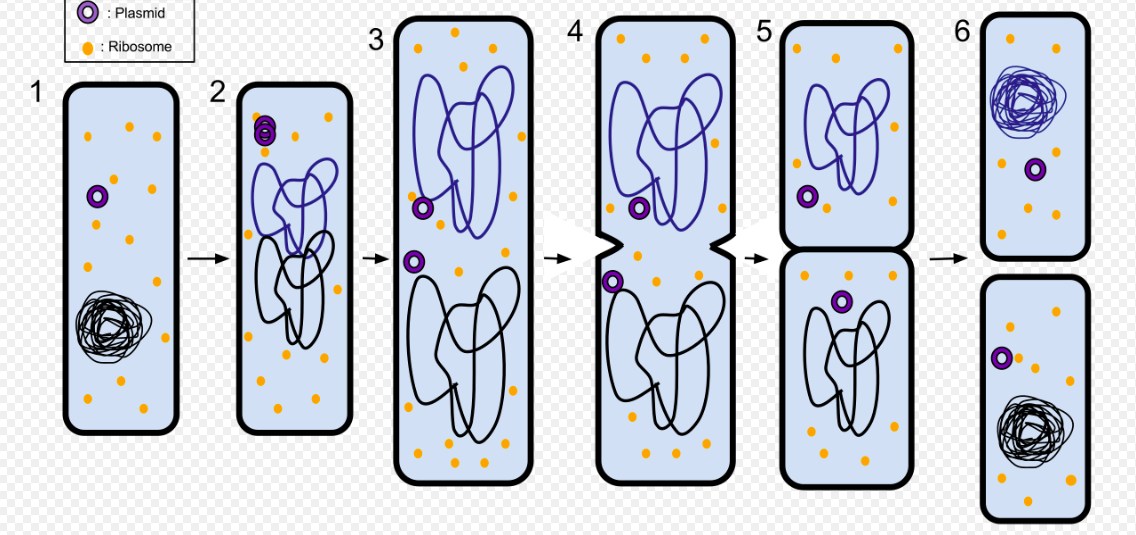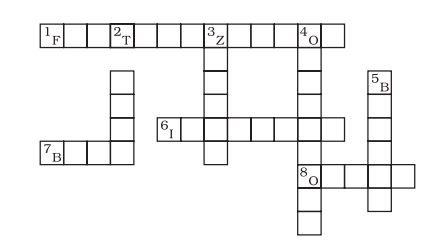NEET/JEE Coaching Scholarship
ApplyGet up to 90% Scholarship on Offline NEET/JEE coaching from top Institutes
NCERT Solutions for Class 8 Science Chapter 9 Reproduction In Animals: You may have seen a huge variety of living organisms around us, for example, animals, plants, birds, etc. Have you ever thought about how new living organisms are formed or how animals give birth to their young and look similar to their parents? So, the answer is reproduction. Find answers to such questions in Reproduction in Animals Class 8. In the solutions for NCERT Class 8 Science Chapter 9 Reproduction in Animals, you will get answers related to all topics of animal reproduction. In Class 8 Science Chapter 9 solutions, you will find questions based on sexual and asexual reproduction and reproductive organs. Reproduction in Animals Class 8 Solutions provides answers to each question in the 8th NCERT Textbook. These solutions are part of the NCERT Solutions for Class 8. Continue reading to go through the questions and answers given in NCERT Solutions for Class 8 Science Chapter 9.
Topics as given in Class 8 Science Chapter 9 Reproduction in Animals:
| Section | Topic Name |
| 9 | Reproduction in Animals |
| 9.1 | Modes of Reproduction |
| 9.2 | Sexual Reproduction:
|
| 9.3 | Asexual Reproduction:
|
The detailed answers to each question of Chapter 9 Science Class 8 are given below:
Q1. Explain the importance of reproduction in organisms.
Answer:
Reproduction in organisms is important to maintain the continuity of organisms and to carry on their generation to the next generation. If reproduction does not take place, no living being will survive on the earth. Because, of this process, plants, animals, humans even all the living organisms are still alive, if reproduction has not been there then all the plants and animals would have become extinct.
Q2. Describe the process of fertilisation in human beings.
Answer:
The process of fertilisation is the meeting of an egg cell from the female and a sperm cell from the male. Basically the fusion of a sperm and an ovum. When sperms come in contact with an egg, one of the sperms may fuse with the egg. Such fusion of the egg and the sperm is called fertilisation.
Fertilisation which takes place inside the female body is called internal fertilisation.
Q3. Choose the most appropriate answer.
(a) Internal fertilisation occurs
Answer:
(i) In female body
Q3. Choose the most appropriate answer.
(b) A tadpole develops into an adult frog by the process of
Answer:
(ii) metamorphosis In the case of tadpoles, they transform into adults capable of jumping and swimming. The transformation of the larva into an adult through drastic changes is called metamorphosis
Q3. Choose the most appropriate answer
(c) The number of nuclei present in a zygote is
Answer:
(ii) One
Q4. Indicate whether the following statements are True (T) or False (F).
(a) Oviparous animals give birth to young ones. ( )
Answer:
(False) oviparous organisms lay eggs.
Q4. Indicate whether the following statements are True (T) or False (F).
(b) Each sperm is a single cell. ( )
Answer:
(True) Gametes are single-celled.
Q4. Indicate whether the following statements are True (T) or False (F)
(c) External fertilization takes place in frog. ( )
Answer:
(True) External fertilization is common in aquatic animals.
Q4. Indicate whether the following statements are True (T) or False (F).
(d) A new human individual develops from a cell called gamete. ( )
Answer:
( False ) gametes fuse together to form a zygote and give rise to a new human being.
Q4. Indicate whether the following statements are True (T) or False (F).
(e) Egg laid after fertilisation is made up of a single cell. ( )
Answer:
( True ) the fertilised egg is a single cell.
Q4. Indicate whether the following statements are True (T) or False (F).
(f) Amoeba reproduces by budding. ( )
Answer:
( False ) amoeba reproduces by binary fission. (budding happens in hydra)
Q4. Indicate whether the following statements are True (T) or False (F).
(g) Fertilisation is necessary even in asexual reproduction. ( )
Answer:
( False ) In asexual reproduction, only one parent is required so the fusion of gametes does not take place.
Q4. Indicate whether the following statements are True (T) or False (F)
(h) Binary fission is a method of asexual reproduction. ( )
Answer:
( True ) In binary fission, only single organism is required to produce two individuals. So it is a method of asexual reproduction
Q4. Indicate whether the following statements are True (T) or False (F).
(i) A zygote is formed as a result of fertilisation. ( )
Answer:
( True ) In fertilisation, one gamete of male and one gamete female fuse together to form a zygote.
Answer:
(False) it is a multicellular because it is formed from zygote after repeated division.
Q5. Give two differences between a zygote and a foetus.
Answer:
Zygote-
Foetus-
Q6. Define asexual reproduction. Describe two methods of asexual reproduction in animals.
Answer:
In this type of reproduction, there is no need for the fusion of male and female gametes. It is a mode of reproduction in which only a single parent is involved is called asexual reproduction
Two methods of asexual reproduction in animals-
(i) Binary fission - In this type of asexual reproduction, a single cell organism is divided into two halves. Amoeba can reproduce by this method. It begins the process of reproduction by the division of its nucleus into two nuclei. This is followed by the division of its body into two, each part receiving a nucleus. Finally, two amoebae are produced from one parent amoeba

(ii) Budding - In this method developing of new individuals is by the bulges and they are called buds formed on the parent body.
These type of asexual reproduction is common in Hydra. In hydra, the new individuals develop as outgrowths (called buds) from a single parent. While being attached to the parent, develops into smaller individuals and when these get matured, they detach from the parent and become individual ones.

Q7. In which female reproductive organ does the embryo get embedded?
Answer:
The embryo gets embedded in the wall of the uterus for further development. The embryo continues to develop in the uterus. It gradually develops bodyparts such as hands, legs, head, eyes, ears, etc. The stage of the embryo in which all the body parts can be identified is called a foetus.
Q8. What is metamorphosis? Give examples.
Answer:
Metamorphosis - The biological transformation of the larva into an adult through drastic changes is called metamorphosis.
Example- life cycle of a toad.
Q9. Differentiate between internal fertilisation and external fertilisation.
Answer:
Internal fertilisation-
External fertilisation-
Q10. Complete the crossword puzzle using the hints given below.
Across
1. The process of the fusion of the gametes.
6. The type of fertilisation in hen.
7. The term used for bulges observed on the sides of the body of hydra.
8. Eggs are produced here.
Down
2. Sperms are produced in these male reproductive organs.
3. Another term for in vitro fertilisation.
4. These animals lay eggs.
5. A type of fission in amoeba.

Answer:
Class 8 Science Chapter 9 question answer talk about reproduction. There are two modes by which animals can reproduce and these are sexual reproduction and asexual reproduction. In NCERT Solutions for Class 8 Science Chapter 9, you will get different questions based on the topic such as fertilisation, as it is the fusion of ovum and sperm which is called fertilization. Even you will get to know about different types of fertilisation in Reproduction in Animals Class 8 NCERT Solutions.
.
Reproduction in Animals Class 8 Solutions explain several points related to reproduction. Basically, it is the process through which living organisms give birth to their young ones. Class 8 Chapter 9 Science Solutions will help you with all the answers to their questions. But before solving the questions, go through the chapter 9 Class 8 science line by line to understand the concepts given over there. If you need help in finding solutions of NCERT book to any other class, then don't worry NCERT Solutions (class 6 to 12) will help you out.
After going through Chapter 9 Class 8 Science properly, it will be easy for you to explain the importance of Reproduction in Organisms, what is metamorphosis? and the difference between internal fertilization as well as external fertilization and if not then Class 8 reproduction in animals NCERT solutions will help you out.
| Chapter 1 | Crop Production and Management |
| Chapter 2 | Microorganisms Friend and Foe In Microorganisms |
| Chapter 3 | Synthetic Fibres and Plastics |
| Chapter 4 | Materials Metals and Non-Metals |
| Chapter 5 | Coal and Petroleum |
| Chapter 6 | Combustion and Flame |
| Chapter 7 | Conservation of Plants and Animals |
| Chapter 8 | Cell Structure and Functions |
| Chapter 9 | Reproduction in Animals |
| Chapter 10 | Reaching the Age of Adolescence |
| Chapter 11 | Force and Pressure |
| Chapter 12 | Friction |
| Chapter 13 | Sound |
| Chapter 14 | Chemical Effects of Electric Current |
| Chapter 15 | Some Natural Phenomena |
| Chapter 16 | Light |
| Chapter 17 | Stars and the Solar System |
| Chapter 18 | Pollution of Air and Water |
We hope you will ace your examination with the help of NCERT Solutions for Class 8 Science Chapter 9 Reproduction in Animals.
Admit Card Date:03 February,2025 - 04 April,2025
Application Date:01 March,2025 - 06 April,2025
Admit Card Date:07 March,2025 - 04 April,2025
Admit Card Date:10 March,2025 - 05 April,2025

Get up to 90% Scholarship on Offline NEET/JEE coaching from top Institutes

This ebook serves as a valuable study guide for NEET 2025 exam.

This e-book offers NEET PYQ and serves as an indispensable NEET study material.

As per latest 2024 syllabus. Physics formulas, equations, & laws of class 11 & 12th chapters
As per latest 2024 syllabus. Chemistry formulas, equations, & laws of class 11 & 12th chapters
Accepted by more than 11,000 universities in over 150 countries worldwide